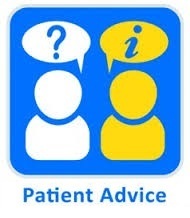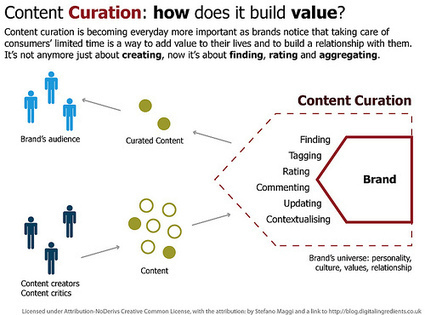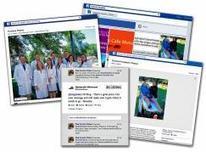 Your new post is loading...
 Your new post is loading...

|
Scooped by
nrip
|
Obesity—now officials recognized by the American Medical Association as a disease—can lead to increased risk for other diseases: hypertension, heart disease and type 2 diabetes, just to name a few. As a result, many Americans are looking for ways to get healthier and make smarter health decisions through diet and exercise. Those are good starting points, but changing habits can be easier said than done.
Google wants to motivate people to get and stay healthy by providing easier ways to access health information. Here are just a few ways they are doing it:
- Nutritional information is now easily available for over 1,000 foods in search. By helping people get quick information about what they eat, it will help them make smarter and healthier diet decisions.
- Using voice search on the Google app, you can now quickly find out how many calories are in all types of foods, from simple ones without nutrition labels like fruits to complex ones like a burrito.
- Android devices now provide detailed biking routes for those looking for alternative ways to exercise instead of going to the gym. The maps feature colored lines showing trails and paths without cars and streets that have dedicated bike lanes.

|
Scooped by
Plus91
|
Hospitals may have been slow to use social media platforms but many are finally taking advantage of all they have to offer and seeking input from patients on how they can improve care and services, reported the Wall Street Journal. The article cites examples of hospitals across the country turning to Facebook, Twitter, YouTube and Pinterest to recruit patients and their families to serve as advisors, asking for their opinions via questionnaires and surveys on planned improvements in care, new services and even facility names.
Nemours/Alfred I. duPont Hospital for Children in Wilmington, Del., for example, has set up a "virtual advisory council" on a private social network, so it can ask parents to voice opinions and advice regarding appointment scheduling, doctors' bedside manners and other hospital concerns, according to WSJ. Similarly, the University of Michigan Health System, which encompasses three hospitals, 40 outpatient locations and more than 120 clinics throughout Michigan and northern Ohio, relies on "e-advisors" to answer approximately 35 online surveys a year, and a teen council communicates by responding to questions via its own Facebook page. Concord (N.H.) Hospital, which includes 295 licensed beds and 238 staffed beds, is using social media to develop meaningful, two-way conversations and, in turn, build brand awareness and customer loyalty, according to the Concord Monitor. And Dartmouth-Hitchcock Medical Center, an academic medical center also located in New Hampshire, has hired a full-time social media coordinator to reach out to patients and their families.
These endeavors, while helpful on a local level, are part of a larger movement from the federal Medicare program to use patient satisfaction surveys, including questions on the hospital's responsiveness to concerns, to determine hospital payments.
According to a guide recently released by the Agency for Healthcare Research and Quality (AHRQ), patient engagement, including the incorporation of the patient's perspective into the planning, delivery and evaluation of healthcare services, is essential to eliminate communication gaps. Furthermore, AHRQ instructs hospitals to form patient-family advisory councils. The idea behind this recommendation is that getting to know patients facilitates focusing on the aspects of the hospital experience that mean the most to the patients. Instead of having to recruit patients and family members to advise on services and facilities at the institutions, through social media, hospitals can obtain input from patients and families more efficiently. "The avenues through which patient voices can be captured and heard are expanding in rapid and creative ways," said Jason Wolf, president of the Beryl Institute, a membership organization providing grants and resources to help hospitals improve patient satisfaction, to the WSJ.
But Roddy Young, Dartmouth-Hitchcock's vice president for communications and marketing, said not all social media interactions are positive, reported Concord Monitor. Patients sometimes change their opinions from one day to the next, and often use the platform to voice complaints.

|
Scooped by
nrip
|
Implementing social media into your practice can look like a hard job; you might not even know where to start. Your patients are turning to the Internet for answers when it comes to their health care. Social media can be the best place for them to go. In the past, word-of-mouth has been considered the best form of patient referrals. Now, social media serves as the modern-day word-of-mouth. So, what tricks can your marketing department do to jumpstart your social media activity? Here are five easy steps to take:
- Create a Facebook Business page and share daily highlights, tagging other practices and community members on your page. Shedding light on other valuable care providers in your area will be beneficial to your patients and will build trust between your practice, or hospital, and your referring community.
- If you have a Twitter account, follow other providers in your community, health care reporters or members of the media and organizations that share valuable information with your patients about local events. On Fridays, you can participate in Follow Fridays by using #FF and tagging influential members on Twitter to connect with them and gain recognition in the community.
- You can also participate in Tweet chats, which occur weekly. Check out Symlur’s Health Care Hash Tag Project for a list of top health care influencers and a schedule for when each chat will be occurring.
- Creating a YouTube channel can be a great way to share information with your patients. Video content is great for SEO (search engine optimization) and it allows you to show patients what you’re all about as opposed to just telling them. Some ideas for video content are virtual tours, patient testimonials or what to expect at our center. These videos do not have to be Spielberg masterpieces, it is only important to start creating content.
- Pinterest does not have to just be for recipes and wedding planning. Have someone creative on your team put together a few images with inspirational quotes, advice or facts to share on your blog then share on Pinterest.
Remember to share the links to your social media accounts on your website, blog and in emails and keep in mind ways to drive patients, staff and community members to your pages through creative campaigns.

|
Scooped by
nrip
|
In the past, epidemiology experts took a lot of hours to determine how and where health epidemics would come from.
Now, with the help of new communication technology—specifically social media—epidemiologists can quickly identify and solve health outbreaks. In one example, Facebook users in Minnesota were able to identify tainted food as the source of a strep throat outbreak.
According to a recent report published by the Clinical Infectious Diseases, 18 out of 63 people who attended a high school dance banquet started to develop strep throat within three days of the banquet.
After seeing a large number of posts on Facebook related to strep throat, one parent alerted the Minnesota health department that this wasn’t just a coincidence. The department then conducted phone interviews with attendees and their family members and analyzed DNA from strep bacteria samples.
They eventually determined the strep came from a pasta dish eaten by many of the party-goers at the banquet. The health department also learned that this particular pasta dish was prepared by a parent who reported having strep throat three weeks earlier.
Social media may have not cured the disease, but it did help establish that the disease was caused by an infectious agent that affected many and was not a random incident.

|
Scooped by
nrip
|
Hospitals are turning to Facebook, Twitter and other forms of social media to recruit patients and their families as advisers. They are asking parents for input, via questionnaires and surveys, on improvements in care, new services and even new facility names. At the University of Michigan Health System, these "e-advisors" answer about 35 online surveys a year, and a teen council responds to questions via its own Facebook page. In Boston, advisers at Brigham and Women's Hospital help edit patient brochures to make sure they don't use too much medical jargon.
The efforts are part of a larger movement to engage patients and families in care and enhance the hospital experience. The federal Medicare program is basing some hospital payments on patient satisfaction surveys, including questions about how responsive a hospital is to concerns. Similar surveys are being developed for pediatric hospitals.
With social media, a hospital can cast a wider net for more feedback than it can expect from a traditional patient and family council composed of a small group of appointees who meet once a month or so.
"The avenues through which patient voices can be captured and heard are expanding in rapid and creative ways," says Jason Wolf, president of the Beryl Institute, a membership organization providing grants and resources to help hospitals improve patient satisfaction. Virtual advisers, electronic surveys and social media "provide great reach, more rapid feedback and a process for engagement that can have significant impact on efforts to improve the patient experience," he says.

|
Scooped by
nrip
|
When we think about the boundaries of communication technology and social media, we tend to put students, residents, and faculty into the same bucket. Policies for one are the policies for the others. But these are all very different people with respect to their ability to understand and handle their public presence.
The latitude given a publicly seasoned attending should be different than that of third-year medical student. For example, I encourage students to avoid online discussion about the hospitals they are rotating in. This is because:
- They don’t yet know what represents the normal workings of a hospital. There are things that seem strange or unjust to a trained eye but happen for a good reason. Perhaps more important, the viewing public doesn’t understand what students don’t know.
- Students are sorting out what represents the thoughts and ideas for their close personal network versus those for global publication. They’re learning which conversations belong where.
- They’re figuring out their public presence.
Students come to medicine with a relatively self-focused view of their networked world, and don’t yet understand how they fit into the broader networked world. As they mature professionally, they recognize that they are part of a broader community, which brings accountability. This progression has real importance when we expose ourselves to the great wide open.

|
Scooped by
nrip
|
Twitter is a Social Network where users send and read short messages of upto 140 characters. Twitter is a Cross between Text messaging, Blogging and Instant Messaging and is called the ‘SMS’ of the Internet.
|

|
Scooped by
Plus91
|
The Mayo Clinic is the gold standard for the use of social media by healthcare organizations. The Mayo Clinic Center for Social Media [MCCSM]--yes, they have a whole center dedicated to social media--facilitates the use of social media throughout the Mayo Clinic and also works to help other hospitals, professionals and patients use social media to promote health education, health literacy and healthcare delivery worldwide.
The Mayo Clinic has the most popular medical provider channel on YouTube and more than 450,000 “followers” on Twitter. They also an active Facebook page with over 300,000 connections. A pioneer in blogging, Mayo has a News Blog, Podcast Blog and Sharing Mayo Clinic, a blog that enables patients and employees to tell stories about their Mayo Clinic experience.
Lee Aase is the Director of the Mayo Clinic Center for Social Media. Lee has a background in politics and media relations and has led the Mayo Clinic into the forefront in healthcare social media.
When asked what his approach to social media marketing was, Lee answered that healthcare consumers want and need in-depth information and it is his job and the Mayo Clinic’s job to offer them that information. “The main idea is to understand that there is a thirst for information out there," said Lee. “When people get sick, they want information and they want it right away."
I then asked Lee what novel or interesting ideas he had tried out at Mayo Clinic. Lee started by telling me about the Social Media Network that Mayo created of 140 organizations and their employees to whom it provides social media tools, resources and guidance in the use of social media in healthcare. Individuals can join also – it’s free and easy to do – and you can obtain access to resources, webinars and all sorts of information about social media and its uses.
The MCCSM also offers a Social Media Residency – an extensive training program in the use of social media. Participants can either sign up for an in-person course or an online option. And there is a Social Media Week at the Clinic with activities starting with Social Media Residency and ending with the member meeting for the Social Media Health Network.
They also offer a book, Bringing the Social Revolution to HealthCare, offer numerous webinars and have a Social Media Week every year, starting with a Social Media Residency course, continuing with a summit conference of lectures and discussion groups and ending with a Network meeting for members. They have an outside advisory board of key members who are active in healthcare social media and Lee lectures nationally and internationally on the use of social media in healthcare.
One of Mayo Clinic’s key physicians and the Chair of Dental Specialties is Dr. Sreenivas Koka. Dr. Koka wanted to improve the quality of experience of patients coming to him for consultation. He had found that many patients were coming to him without clear understanding of questions they would be asked and several were also apprehensive about Dr. Koka’s understanding of English, as his name indicated foreign ethnicity.
Dr. Koka decided to make a video, introducing himself, putting his patients at ease, explaining what would be expected of them and the kinds of questions they could expect during the visit. He asks patients to think about their symptoms and any questions they have before they come to see him. As Dr. Koka grew up in London and has a British accent, any questions about his speaking and understanding English are allayed.
Lee explained that the Mayo Clinic is now conducting a study on how this video really helps patients. Some patients are being sent the video ahead of time, and some are not. “Dr. Koka knows right away who has seen the video and who has not,” Lee said. “The hypothesis is that this video will greatly reduce anxiety, increase visit efficiency and help overall patient satisfaction.”
When asked what was the biggest lesson learned at Mayo, Lee answered, “The biggest lesson is that there is really no substitute for valuable content. Patients want in-depth great content. Interaction is important, but really, you need great content.”
Lee’s takeaway advice to other healthcare social media managers out is to the point. “Just do it! You have to get hands-on experience and do a great job. Think big, start small and act fast. Do all that you can to prove yourself. Do a great job and then show what you have done. Prove yourself and you will get the support you need.”

|
Scooped by
Plus91
|
Perhaps no term captures the 21st-century zeitgeist quite like “social media.” Facebook, Twitter, Yelp, LinkedIn, Instagram—the ability to share across broad networks instantly, unfettered by geographic distance, has changed how we do business and transformed our interpersonal relationships. Now, online reviews and ubiquitous mobile communications change the way people connect with their doctors. Rating sites such as Healthgrades, ZocDoc, and Vitals increasingly affect the reputation of health care professionals and the success of their work.
Last week, ColumbiaDoctors and the CUMC Office of Communications presented “Social Media for Health Care Professionals.” The event featured presentations and panel discussions with social media experts: Columbia University Chief Digital Officer Sree Sreenivasan; the editorial director of MedPage Today, Ivan Oransky, MD; the former surgeon and anonymous writer who blogs under the name Skeptical Scalpel; P&S professor, oncologist, and popular blogger Azra Raza, MD; Tamar Schiller, DDS, MBA, of the College of Dental Medicine; Gina Czark, director of social media for NewYork-Presbyterian Hospital; and, from the CUMC Office of Communications, Chief Communications Officer Doug Levy and digital strategist Michele Hoos.
Presentations focused on the basics of social media, how the modern medical professional can and should be involved in social media, and how to avoid embarrassing social media interactions that can affect the reputation of both the professional and the institution.
Top 10 tips offered at the event:
1. Consider social media a dialogue, not a monologue. Many mistakenly think of social media as a broadcasting platform, yet it is most useful for promoting conversation. For example, responding to Tweets and mentioning people in your posts via their Twitter handle draws them—as well as their followers—into the conversation.
2. Understand that the impact of social media is not in who follows you but who follows who follows you. Though you may have only a few followers, the reach of your posts increases exponentially with each person who shares your material. Focus also on the quality of followers, not just numbers.
3. Share useful information. Our primary goal in social media is to educate, which means you should share information that people beyond CUMC may find useful. This could be a new scientific finding, health advice, commentary on a medical or science story in the news—and much more.
4. Accept that the line between professional and private is eroding. Even if your social media bio does not identify you as a Columbia University affiliate, anything you say or post online can damage both your reputation and Columbia’s. Do not rely on disclaimers to protect you or Columbia. Remember that patients and research subjects count on us to keep their information private.
5. Be an early tester of technology but not an early adopter. It’s nearly impossible to stay abreast of the ever-changing world of apps and websites. Find a medium that suits your needs—be it a blog, Twitter, LinkedIn, etc.—and develop it. Each platform does different work; find what works for you.
7. Get noticed by standing out. We are bombarded with things to read and watch and listen to; the average person gives a blog post or Tweet only a glance. Make your material engaging and brief, with a dash of humor if appropriate.
8. Follow people you know who are already experienced in social media. Facebook and Twitter have an etiquette and lexicon that could easily confuse the neophyte. By following someone who is more experienced, you can familiarize yourself with the terrain and processes.
8. Work collectively. One of the benefits of being part of CUMC is that we are a large community with many people already active and successful on social media. Interested in blogging or setting up a Facebook page? Start with the CUMC Office of Communications. Trying to promote your clinical practice? ColumbiaDoctors has a marketing/communications expert who can help.
9. Doctors should expect online reviews. Not yet as universal as restaurant or hotel reviews, physician and dentist reviews are a fast-growing part of online media. Generally, patient experience influences online reviews more than the quality of the patient care. The best way to prevent negative online posts is to make sure that patients feel good about their experience. The last person to interact with patients has a disproportionate influence on their overall satisfaction. If a negative review is posted, consult the CUMC Office of Communications before responding publicly.
10. Use common sense online just as you do offline. There is no way to predict how your message will be read, or by whom. Be careful about posting content that might be offensive, just as you would use caution when speaking in person. Let your intuition be your guide; if it seems like a bad idea, it probably is.

|
Scooped by
nrip
|
As the world becomes more connected, healthcare professionals are using content curation as a gateway to reach potential patients and interested readers.
What is content curation?
Content curation is the art and business of collecting relevant content and displaying it in one convenient place, allowing easy and timely access for readers and patients. This content can include new research, studies, fresh findings, updates on healthcare technology, opinion pieces on the state of healthcare, examples of new procedures, treatment options, interesting notes on diagnosing patients, and so much more. All of this content is then gathered into a format that is easy to read and engaging to those who seek out the information.
Content curation can be done in many different ways. There are several platforms that offer the service, such as Paper.li and Scoop.it. These curation programs offer suggestions for relevant content, then help you display it on a blog, social media platform or your personal or company website. Some platforms offer free services, but “pay to play” services are also taking hold, with promises of expert content that can’t be found anywhere else.
Why it matters to healthcare professionals
A 2013 report by Pew Internet and American Life Project found that 59 percent of U.S. adults had turned to the Internet to find health information in the past year. Thirty-five percent of those specifically searched for conditions that they or a loved one might have. The most common topics? Diseases and conditions made the top of the list, followed by treatment options or procedures.
Healthcare professionals were also a common topic of Internet interest.
By offering a website filled with useful, informative content, you can tap into that vast number of health-conscious readers. Content curation allows you to gather the information your patients want in order to give them a sense of community, peace of mind and the answers they seek.
This in turn boosts your own brand and business, attaching your name to the things that matter most to readers. By having your name associated with high-quality, relevant and desirable content, social media can help drive your business and reputation to an even higher plane.
In the digital world, content is king. In the healthcare world, accurate and timely information is king. Blend them together with content curation, and you will provide a service that benefits everyone — you, your company, and the many readers and potential patients who need informative, reassuring answers.

|
Scooped by
nrip
|
With the increasing popularity of social media, your physicians, too, can start using social media to engage with patients and to offer themselves as a resource to the community.
"Physicians have limited time and sometimes lack the knowledge, but even simple interactions on the Web can have a multitude of benefits for both your physicians and your community hospital."
Why Physicians Use Social Media
Bunny Ellerin, founder of Ellerin Health Media, n cites a few reasons why physicians use social media:
- To improve patient care: Physicians recognize that patients have access to a multitude of irrelevant and inaccurate information on the Web, so some use social media to provide patients with trusted and valid content from medical professionals.
- To make themselves easy to relate to: There is a long-standing stigma that physicians should maintain personal distance from patients. By interacting with patients on such a personal, informal level through social media, physicians "invite patients into their world" and make themselves more approachable.
- To participate: The ability to give opinions and views used to be available only to medical journalists, but now every physician is capable of expressing his ideas on healthcare practices, procedures and other medical issues through social media.
Easy ways to get started
Looking for ways to get your physicians started on social media? Encourage them to:
- Create a Facebook page: Facebook allows the physician to establish a personal identity on the web and connect on a human level, with the capability to share health and event offerings.
- Open a Twitter account: Twitter enables easy status updates-even throughout the workday, the physician can easily post comments and links and share bits of information with patients without losing much time.
- Start blogging: Although blogging can be a bigger time investment, center on your physicians' strengths-if some of them enjoy writing and offering opinions and advice, suggest they start a blog. It would be helpful to have a few reliable physicians' blogs to which you could refer patients for updated medical insights and opinions. Two great, free blogging sites arewww.wordpress.com and Google's official blog, www.blogspot.com.

|
Scooped by
nrip
|
Caesar hadn’t even started work at Concord Hospital before he had almost 60 people saying they liked him.
A life-size patient simulator, Caesar made his debut on Facebook on Aug. 6, in a post from Concord Hospital after a fundraising golf tournament.
Fifty-nine people “liked” the post – featuring a photo of Caesar being treated on a gurney – and four people posted comments under his photo. He’s a high-tech training tool, and just one example of the increasing presence of social media in the health care world.
Health care organizations are late adopters of social media; as recently as 2009, a Brooklyn-based physician told the magazine Health Affairs that the medical profession “is fundamentally flawed relative to how today’s world communicates and functions. . . . It needs to be Facebook-ed (and) wiki-ed.”
Two years later, providers have joined the hospitality, entertainment and retail industries in using Facebook, along with Twitter, YouTube, Pinterest and more to connect with their customers.
The goal of their social media efforts is “to engage our community members in meaningful, two-way conversations and in doing so build brand awareness and customer loyalty,” said web manager Jenn Dearborn. Her position is fulltime, and since 2009, the web manager has been responsible for managing the hospital’s social media content and strategy and the hospital’s internal and external websites.
Dartmouth-Hitchcock Medical Center has had a full-time social media coordinator for the past year. The current employee is leaving to write a novel, and the hospital recently advertised the job, looking for her replacement.
“It’s hard work. This person is supposed to gauge the landscape, taking in, monitoring, listening to the conversation and looking beyond what people are saying on our pages to what people are saying about other providers, and what are they saying in the wellness space about how they can stay out of the hospital,” said Roddy Young, Dartmouth-Hitchcock’s vice president for communications and marketing.
His department is committed to maintaining its presence on social media, because that’s where people are and it’s what they expect, he said. “The way people consume music, media and movies, how they shop, how they access higher learning, it’s all changed in unbelievable ways . . .
Someone who is 28 and lives life in the digital space, they want their health care experience to conform to the way they interact with other companies. We’re trying to do the right thing to serve the wants and needs of the consumer and the demands of the consumer to have it served up at home, in real time, on their time.”

|
Scooped by
nrip
|
Using Social Media to Recruit the Top Talent
According to the Association of American Medical Colleges, the gap between the demand for medical services and the supply of qualified physicians is expected to widen in the coming years. This means that it will be increasingly difficult for hospitals to recruit top medical talent.
In order to overcome the unfavorable recruiting situation, many hospitals are using the latest media tools to enhance their recruiting efforts, one of which is social media.
If used correctly, social media can be a powerful recruiting tool that can help hospitals convey their employment needs to a large number of qualified medical professionals and seek out the best possible candidates. Here are a number of ways you can use social media to recruit top talent for your hospital:
|



 Your new post is loading...
Your new post is loading...





















